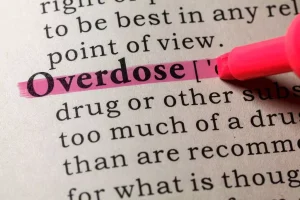
Consequently, they will develop increasing ascites and edema and experience weight gain. In some cases, vast amounts of abdominal fluid may collect, occasionally more than 7 gallons (Epstein 1996). Like the kidneys, the liver plays an important role in maintaining acid-base balance. Liver diseases—including alcohol-induced liver problems—disrupt this function and can contribute directly or indirectly to a wide range of acid-base disturbances. Without adequate blood flow, the kidneys struggle to remove waste products and excess fluid from the blood.

Kidney Pain After Drinking: 7 Possible Causes
- They measured the highest levels in the heart, followed by kidney, brain, and liver.
- Although resilient, the kidneys can deteriorate as a result of malnutrition, alcohol abuse or dependence, or liver and other diseases.
- Having an occasional glass of alcohol may not cause any harmful effects if your kidney functions regularly.
- Chronic alcohol consumption is a well-known risk factor for tissue injury.
- Several epidemiological studies have shown that mild alcohol consumption benefits cardiovascular health (Coate 1993; Kannel and Ellison 1996) by reducing the risk of coronary heart disease (Mukamal et al. 2006).
Alcohol can cause changes in the function of the kidneys and make them less able to filter your blood. In addition to filtering blood, your kidneys do many other important jobs. In many patients with liver cirrhosis, the kidneys’ ability to create dilute urine is compromised, leading to a state of abnormally low sodium concentration (i.e., hyponatremia). In hyponatremic patients, the amount https://ecosoberhouse.com/ of fluid retained by the kidneys is disproportionately greater than the amount of sodium retained. In other words, the kidneys’ ability to excrete excess fluid by way of dilute urine is impaired, and too much fluid is reabsorbed. Hyponatremia probably is the single most common electrolyte disturbance encountered in the management of patients with cirrhosis of the liver (Vaamonde 1996).
- If you have any other questions about enjoying alcohol safely, please speak to your doctor or your kidney dietitian.
- The treatment for alcohol-induced kidney problems depends largely on the type of kidney disease a person has sustained.
- The limits are different for men and women, because men usually weigh more and alcohol is processed differently by the sexes.
- One form of alcohol abuse that contributes to kidney disease is binge drinking, usually defined as consuming four or five drinks within two hours.
AKF comments on USPSTF draft research plan on chronic kidney disease screening recommendation
Investigators have not yet fully explained the mechanisms underlying this wide range of abnormalities, though, and have devoted little attention to alcohol’s effects on kidney hemodynamics in people who do not have liver disease. Along with oxidative stress, increasing evidence suggests that some nonoxidative mechanisms also factor into alcohol-related organ damage. Specifically, ethanol metabolism produces fatty acid ethyl esters in various organs (Laposata and Lange 1986), which can cause ethanol-induced organ damage. Calabrese and Rizza (1999) found that ethanol induced a significant increase in the levels of fatty acid ethyl esters.

Blood-Flow Changes
There are no specific studies suggesting that certain types of alcohol are worse on the kidneys than others. According to the NKF, individuals who have sustained an alcohol-induced AKI may require dialysis, depending on severity. Dialysis is a procedure that involves filtering waste products and excess fluid from the blood. If you have any other questions about enjoying alcohol safely, please speak to your doctor or your kidney dietitian. Alcohol can worsen the side effects of chemotherapy and other cancer treatments, such as nausea, dehydration, diarrhea, and mouth sores.
- Former drinkers are mostly remarkable, as their health status may be worse, and morbidity and mortality are higher than never drinkers [27].
- Alcoholic patients also may develop low blood levels of phosphate by excreting too much of this ion into their urine.
- Preventing the risk of kidney disease entails taking care of your heart and weight.
- Figure 1 showed the crude follow up condition of the three drinking groups.
Effects on Fluid and Electrolyte Balance
Major clinical features of hepatorenal syndrome include a marked decrease in urine flow, almost no sodium excretion and, usually, hyponatremia and ascites. Blood urea nitrogen (BUN) levels and serum concentrations of the waste product creatinine are somewhat elevated, but rarely to the degree seen in patients with end-stage kidney failure when kidney disease is the primary disorder. Judgments based on such relatively modest alcohol and kidneys BUN and serum creatinine increases often underestimate kidney dysfunction in patients with hepatorenal syndrome, however, because malnourished cirrhotic patients tend to have low levels of urea and creatinine. As an example, Puddey and colleagues (1985) evaluated the effects of hormones that regulate kidney function. Their results show not only how alcohol disrupts homeostasis but also how the body reacts to restore it.

- The few studies focusing on alcohol’s direct effects on perfusion in human kidneys suggest that regulatory mechanisms retain control over this component of kidney function despite alcohol consumption.
- Increased gastrointestinal permeability and endotoxin load may lead to alcoholic steatohepatitis resulting in excessive immunoglobulin A (IgA) load (due to increased intestinal production and decreased hepatic IgA clearance).
- Participant information, including education, income, marriage status, and lifestyle behaviors, were obtained during in-person interviews.

